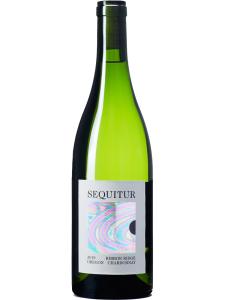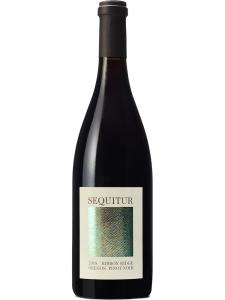Ribbon Ridge is a small sub-region of the Chehalem Mountains AVA in Oregon's Willamette Valley. The first grapes were planted here in 1980, but Ribbon Ridge did not become a separate AVA until 2005. Pinot Noir grapes thrive in the terroir here and are capable of producing wines with elegant structure and intense, concentrated flavors. Chardonnay and Pinot Gris are the AVA's other notable varieties.
The ridge is a free-floating hill on the southern side of the Chehalem Mountains, bordered by the Ayres and Dopp creeks in the north and west and the larger Chehalem Creek in the west (where the ridge rises suddenly and dramatically). The highest point on Ribbon Ridge is 680ft (210m) above sea level, and the AVA covers all the land above the 240ft (75m) contour line. The Dundee Hills AVA lies a few miles to the south, and Portland is just 20 miles (32km) away.
The soils are Ribbon Ridge's defining feature and are significantly different from those of the surrounding AVAs. While the northern Willamette Valley is famous for its volcanic Jory soils (seen in Dundee Hills and Eola-Amity Hills), Ribbon Ridge has marine sedimentary soils, having once lain at the bottom of the Pacific Ocean. These ancient, weathered soils are finer and deeper than those of the surrounding landscape, causing vine stress which in turn lessens vigor and yield and leads to high-quality grapes. Below the 240ft contour line that forms the boundary of the AVA, the alluvial soils are richer and more fertile – not ideal for viticulture.
Ribbon Ridge is smaller than the surrounding landscapes and so enjoys shelter from the prevailing weather systems, leading it to be slightly warmer and drier than other AVAs in the northern Willamette Valley. The Coast Range to the west shields the ridge from the worst effects of the Pacific Ocean, while the Chehalem Mountains provide shelter from the seasonal extremes of temperature from the Columbia Valley in the north. As a result, Ribbon Ridge's climate is steady and consistent, with few temperature spikes and low to moderate annual rainfall.
Most of the prime vineyard sites on Ribbon Ridge are south-facing to take advantage of the prevailing sunlight during the growing season. These warm, sunny days are followed by much cooler nights, extending the growing season and ensuring that vital acidity is not lost during the ripening process. As a result, the wines of Ribbon Ridge are poised and elegant, with a good balance of acidity and richness.
Like the nearby Dundee Hills and McMinnville AVAs, Ribbon Ridge is enjoying a steadily growing reputation for the high quality of its red wines, despite its relatively short history as a wine-growing region.



